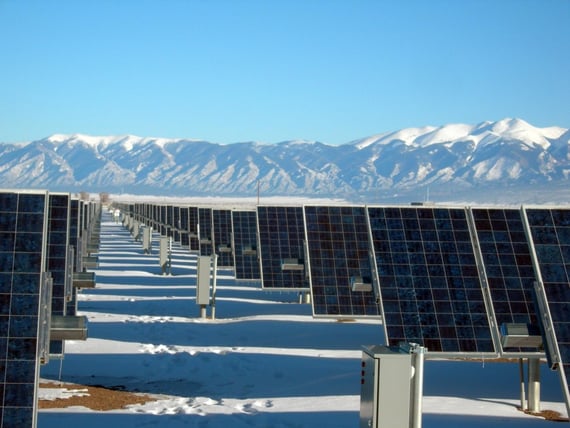The goal of green technology is the same as anything else that is green: To provide sustainable solutions with minimal impact on the environment. When integrating green tech with green construction, the aim is to aid green buildings by making them energy efficient and sustainable. There are a variety of ways to use green tech in the building process, which decreases the projects carbon footprint, thus making it environmentally friendly. On top of that, these solutions assist in profit generation, marketability and buyer satisfaction. Certain municipalities are also beginning to require more and more green standards.
Solar Power. Rather than using traditional, non-renewable energy sources, solar power pulls energy from the sun. That power is used in two ways: Actively and passively. Active solar power absorbs the sun's radiation to provide heat and electricity. Passive solar power uses strategic placement of windows and uses heat-absorbing surfaces. The windows let in the energy and the heat absorbed aids in heating the home during cold periods.
Biodegradable materials. Traditionally, construction methods create a lot of waste, waste that is not good for the planet. The use of biodegradable materials, meaning materials that will decompose without releasing harmful toxins or chemicals into the air and soil, greatly reduces the carbon footprint of a project.
Green Insulation. Green insulation uses natural fibers, recycled material and other environmentally friendly materials to insulate homes and buildings. Lining the space between walls with material that is reused or recycled not only falls into making the building green, but sometimes these materials are more effective in insulating homes than traditional methods.
Cool Roofs. These roof aid in keeping buildings at standard room temperatures by lowering heat absorption and thermal emission. They do this by reflecting heat and sunlight away from the building. Traditional roofs can absorb heat and actually be warmer than the stated air temperature on a given day, which ends up costing more money to cool. A cool roof, because of the way it is designed, can reduce energy costs by 10-15%.
Water Efficiency Technologies. Water efficiency technologies encompass the re-use and application of efficient water supply systems and are part of sustainable construction technologies. Dual plumbing, greywater re-use, rainwater harvesting and water conservation fixtures are examples of water efficiency technologies. These technologies should be implemented during the building process as part of the construction, not something done by a homeowner after the fact.
Sustainable Indoor Environmental Technologies. Indoor air quality has largely been of vital importance to the population's more vulnerable communities like the elderly and those with chronic illnesses, but in more recent years has become important to a variety of people. The health and safety of people who reside in buildings or spend many hours in buildings is important, not only to health, but our economy. This is a mandatory part of green construction and must include hazard-free elements, non-toxic materials, low volatile emissions and moisture resistance. Implementing proper filtration and ventilation systems to ensure air quality is vital.
Electrochromic Smart Glass. Electrochromic smart glass is a new technology which uses small electric signals to slightly charge the windows to change the amount of solar radiation they reflect. This is part of sustainable construction technology. Incorporating it into the buildings control system will allow users to set the controls. They can determine how much solar radiation to block. Homes and commercial buildings can save on heating, ventilating and air conditioning costs with these windows.
There are a variety of ways to integrate green technology with green building, and only a few are listed here. If you are a builder, developer, investor or broker, you definitely want to look into these green technologies.
Integrating green tech with green construction in your projects not only decreases your carbon footprint, but also gives your name meaning with consumers. That reputation leads to new customers, which increases your profits and builds your business. Ultimately, the goal of you business is to generate revenue, which green building does. Helping the environment is an added bonus!

Recent Posts
- Spec Construction Loans: A Spec Line of Credit Is Worth the Paperwork
- Spec Homes and Pre-Sale Homes: The Relative Benefits for a Spec Builder
- How a Lender Sees Spec Construction Success: Insights for the Investor Builder
- How Is a Spec House Different From Other Kinds of House Construction?
- How a Private Lender Compares to a Bank Lender for a Spec House Construction Loan
